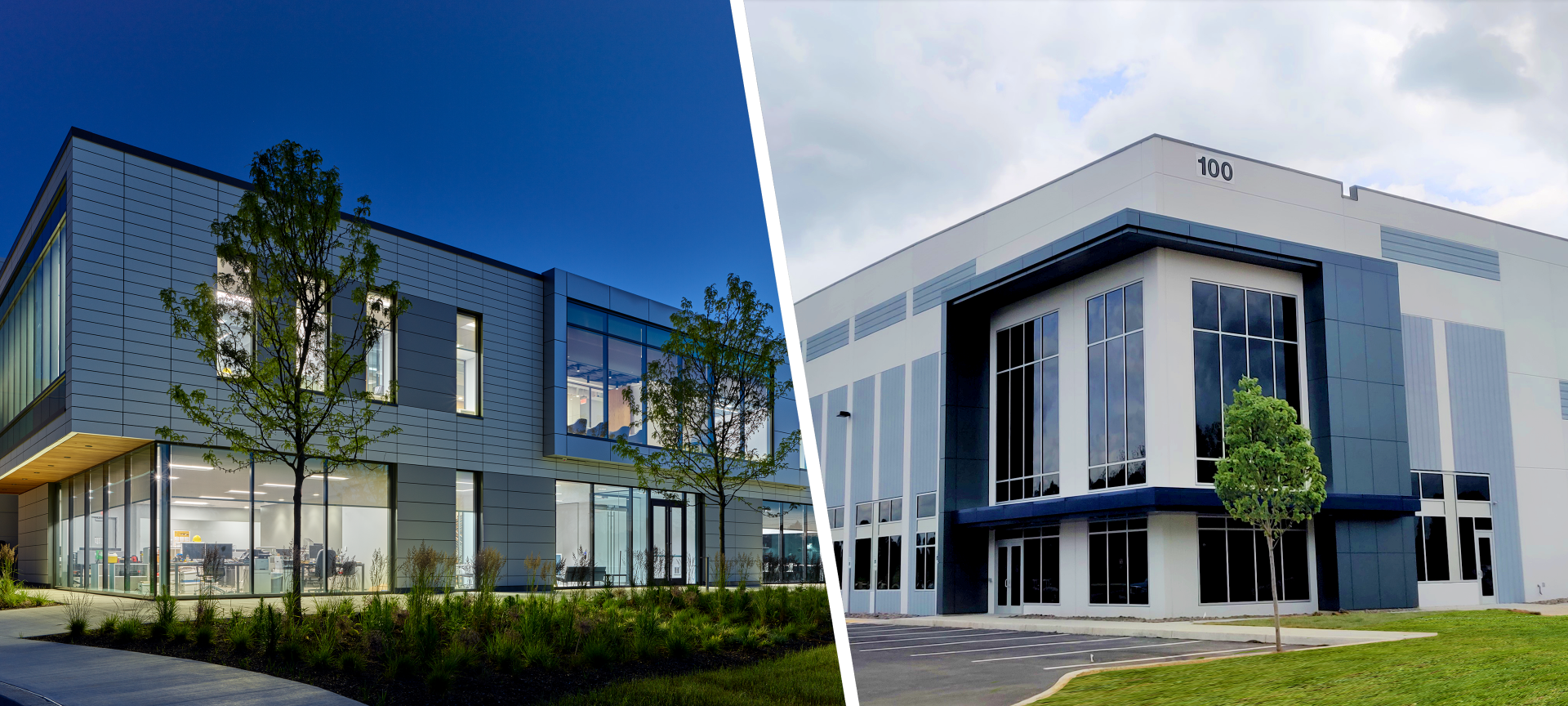Will they continue to rule the Northeast in 2021? Or will there be a new rising star? Panel choice is the number one question we receive from our industrial clients and partners. It’s not an easy decision and the pandemic has only added to the complex factors involved. For some guidance we turn to our Senior Industrial Project Manager, Bryan Clemons. Here’s what he has to say!
Let’s begin with this recent conversation excerpt with a developer client and general contractor while reviewing an accelerated schedule for a ground-up warehouse in the northeastern United States.
We said, “Oh! Hello, Industrial Client. Due to the time of the year, we wouldn’t recommend going tilt-wall for your building shell as it will increase building costs and involve dealing with winter conditions. Buuuuut, if you decide you want to go with the alternate for insulated pre-cast panels and still maintain the schedule, we’ll need to place the order today as there’s an 18-21 week lead time due to the Covid-19 pandemic and an extremely high demand for standard width panels.”
It’s a tough conversation to have. We discuss panel options regularly with clients and there is no “right” choice. The decision is personal, driven by many outside factors, and the list of pros and cons typically puts the two options in equal standing.
Tilt-Wall
Historically, the preferred method has been tilt-wall (or site-casted). The reasons? Larger panel sizes mean less joints, they’re more economical for larger buildings, and have greater panel design flexibility to name a few.
Let’s go back in time somewhere between 600 and 200 B.C. (we did say ‘historically’) when the Romans first began utilizing concrete. Stay with us here. In that period, imported or “factory made walls” weren’t an option. So, cast-in-place or site-casting methods became popular and time went on. So much time, in fact, that here we are today still happily using this technique.
In recent months, however, modern tilt-wall construction has faced some challenges. For one, steel prices continue to fluctuate. Additionally, many fast-track, last-mile distribution centers are being proposed with footprints of less than 150,000 SF. This makes the casting process more time consuming due to limited slab area. Furthermore, tilt-wall requires large orders of dimensioned wood for the panel forms and reveals. The recent pandemic is affecting lumber supply chains, making the required materials extremely limited or sometimes entirely out of stock.
The last con is a big one – tilt-wall construction requires extensive labor to construct. The Northeast has been incurring the greatest labor loss (compared to southern states) but overall, the entire construction industry lost 975,000 jobs in April, according to the most recent report from the U.S. Bureau of Labor and Statistics1.
Pre-Cast
Now, let’s take a closer look at pre-cast panels, oft considered the next best option. Pre-cast concrete has attractive benefits for warehouse shell construction: it’s cost effective for various sized projects, has great thermal properties, factory construction offers high quality control, and installation is quicker and less labor-intensive. And, it should go without saying that pre-cast can be delivered and erected at almost any time of year while tilt-wall has limitations based on weather conditions.
Pre-cast does have its disadvantages, though – more panel joints to maintain, much less aesthetic versatility in panel design, limitations on panel heights, and highly fluctuating lead times and shipping costs. For our clients, these disadvantages are sometimes enough to justify using tilt-wall construction – even on smaller sized projects – especially if schedule is a major concern.
What’s next?
While the pandemic has produced its share of challenges in the construction industry, projected growth for industrial development actually continues to rise with online businesses seeking new US locations to build facilities.
We continue to hear that the fallout from Covid-19 will affect both tilt-wall and pre-cast construction costs and availability well into 2021. Additionally, while they’ve had a long, popular run, there is a growing awareness of concrete’s negative environmental impact – mainly it’s embodied carbon. A ton of cement is equal to a ton of greenhouse gas emissions. These factors may turn the tables for the two longtime industrial façade sweethearts.
Although tilt-wall and pre-cast are still the most popular choices, other envelope systems should be considered: pre-engineered, conventional masonry, and the trending “mass-timber” construction. While they may not be a fit for every developer or user, these could be viable alternatives for shell enclosures until we see further stabilization in the industry and overall economy.
You may also enjoy…



